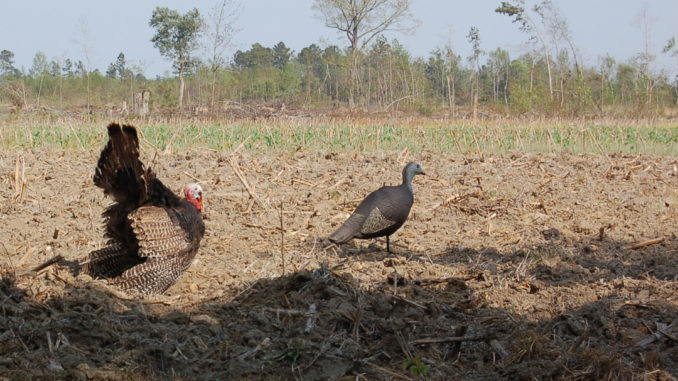
Over the past 20 years, turkey fever has set in across North Carolina, and every decoy manufacturer has amped up its styles and attention to detail. Decoys have evolved from the old, drab-looking hens with little peculiarity to realistic gobbler decoys with natural iridescence.
From mating stances and motion-type decoys to setting hens, decoy manufacturers have come up with just about everything under the sun. Yet nothing can replace nature’s exquisite masterpiece of iridescence on the real bird.
Few decoys can come close to the realistic appeal of a real, mounted bird. The way the feathers shine in the light is unmatched by any decoy. When used as a decoy, they are often referred to as a “stuffer.”
Most taxidermists provide reduced costs for mounts to be used as decoys over presentation-quality mounts. Commercially, Hazel Creek Real Decoys (www.hazelcreekinc.com) out of Green Castle, Mo., put out a top-of-the-line decoy using a real turkey, but made for the hunter for easy transport.
Realistic, mounted turkeys come with their own downsides. Stuffers are heavy and cannot be folded up into a compact package. Ease of transport is significantly reduced and a real problem. Additionally, the useful life for a stuffer is only a few years, due to damage in transport and abuse by other turkeys. Still, no other decoy will match to the effectiveness of a real, stuffed bird.
As an alternative, hunters can keep the fan from a gobbler and convert it to a usable decoying device; a fan can sometimes be as effective as a whole bird mount or decoy to help draw a gobbler into range.
Hunters should spread out the feathers from a freshly-killed bird and tack to a piece of plywood. All of the exposed meat should be covered with salt or borax for preservation and to prevent unpleasant aromas during storage. The fan can be tacked to a small wooden frame and placed on a dark-colored stake to be used in future seasons.




Be the first to comment